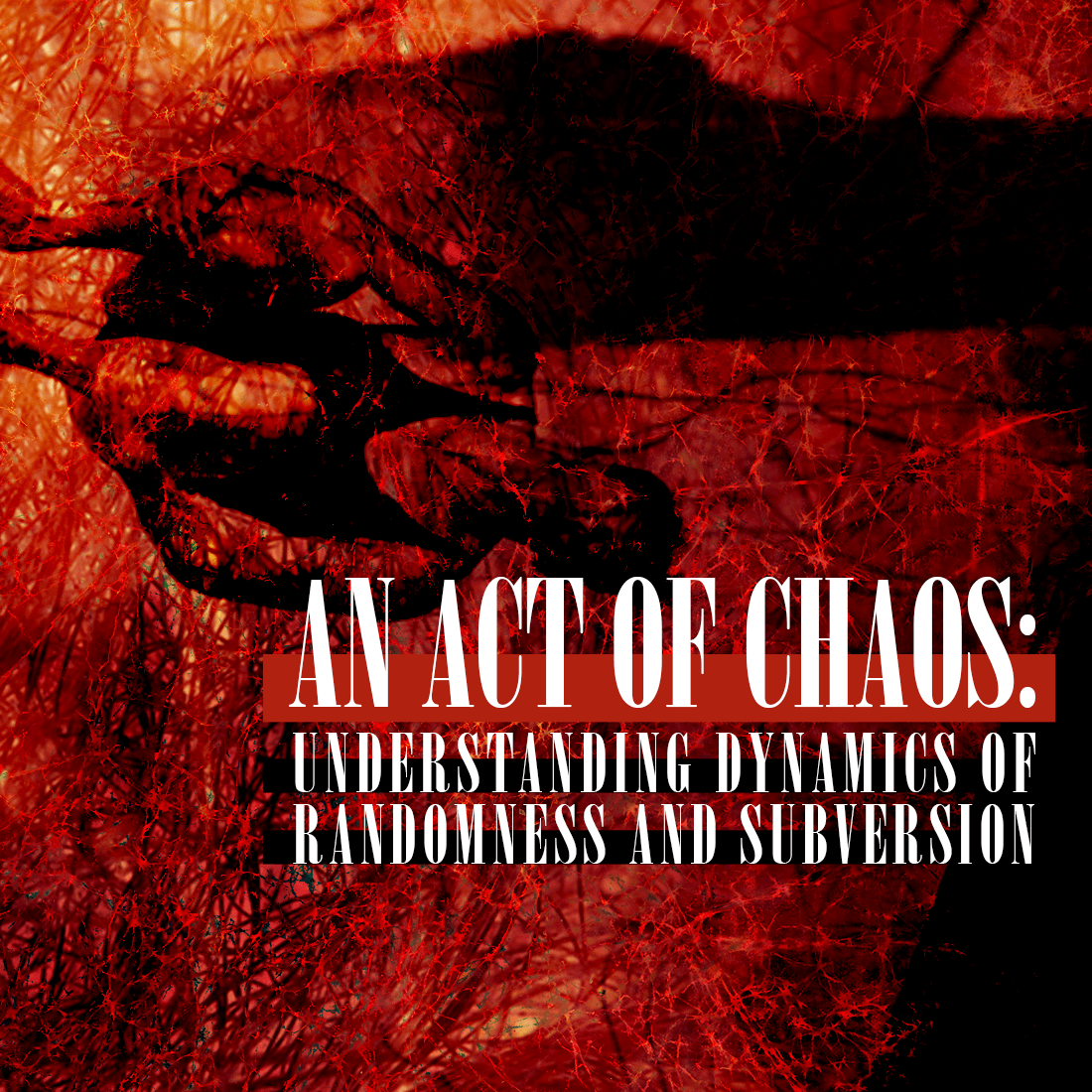TORIANO HAYWARD
In the hours before Easter Weekend 2017, seven-time Grammy Award winner Kendrick Lamar released his fourth album, DAMN.. While fans did not receive a second album or “resurrection” on Easter Sunday, as rumored, in DAMN. they did receive an album that offers multiple experiences with every listen, with each listen bringing about an interpretation that directly contradicts the previous listen.

In this album, Lamar has created a piece of art that is both in love with and at war with itself. The fourteen song, fifty-five-minute album twists and dives into the dichotomies of the psyche of the American Black Man in an unusually complex and nuanced portrayal. This portrayal displays a fascination with extremes as Kendrick questions the impact of an unrighteous society on an oppressed individual within it.
In its message and form, DAMN. could not be more of a product of genius. It is all at once a manifestation of the past, an analysis of the impact of the present, and a suggestion of the future — a musical liminal space. In order to accomplish this time travel, Lamar has relied heavily on songs that explore distinct conflicts in ways that feel, at times, extremely literary. Ideas in each song battle with their complete opposite. Polar opposite feelings, decisions, sensations, mindsets all existing within one (tortured) soul. However, what sets DAMN. apart is Lamar’s ability to intricately expose this individual, internal opposition through rap, an art form largely defined by big-picture societal opposition. He releases this personal energy in a time that is heavily charged with societal opposition. All of this is done in a way that sounds distinctly different from the current sounds on the radio. What’s different here from his previous works is his blending of old rap tropes with the grounding, current voice we have come to expect from the West Coast artist.

Kendrick Lamar’s iconic 2016 Grammy performance | Source: © Vulture
The good, kid m.A.A.d City, To Pimp A Butterfly artist’s fourth album is both perfectly situated in its time as well as a resounding echo of the yesteryear of rap. As the present standard of rap, Lamar reminds us that the bar was set long before his debut fourteen years ago. At times DAMN. is haunted by Eminem’s war on words, Jay-Z’s flirtations with pop, and Tupac’s unapologetically truthful assessment of the status quo. It is the undeniable presence of Tupac, however, that reminds us of the optimistically-hopeless struggle that is unique to the American Black Man. We are reminded that this struggle for humanity is not isolated in our time; instead, it has spanned across times and is currently a noticeable piece of the DNA of Black men in America; a heritage that was created in the image of royalty plagued with omnipresent struggle.
In [DAMN.], Lamar has created a piece of art that is both in love with and at war with itself.
Since the release of the album on April 14th, the Washington Post reports that over eighty people have been fatally shot by police officers. Almost exactly a month after the release, high school freshman Jordan Edwards was murdered by a police officer in Houston while leaving a party. Forty-eight hours after Edwards’ murder, push notifications spread information about the acquittal of two Baton Rouge police officers responsible for the 2016 murder of Alton Sterling. It is this toxic, death-infused environment that warrants the opening questions of DAMN.. We too are reminded in the haunting opening, that this environment has existed since the Black Man was first shackled and delivered to the shores of America.
The album begins:
Is it wickedness?
Is it weakness?
You decide,
Are we gonna live or die?
Two minutes into the album, you realize Kendrick has wasted no time in setting the tone in which he will tell this tale. Just as all other aspects of this album, the tone is filled with dichotomies that each serve as another peeled-back layer of the experience of Blackness in America. The tone is aggressive yet agreeable, ambiguous yet oddly specific. The prologue of the album begins and ends in a possible allusion to an allusion as Lamar questions the genesis and impact of wickedness and weakness (perceived or otherwise) on an individual in a corrupt environment. Similar to Tupac’s 1991 “Something Wicked,” the wickedness Kendrick portrays is similar to that of King Macbeth: a wickedness born out of debilitating, hallucinatory fear. This loaded literary reference is directly followed by a portion of the Geraldo Rivera soundbite that circulated following Lamar’s 2015 BET performance where Rivera condemns rap and speculates about the damage rap has done to the black community. It is with this transition from wickedness to Fox News that we realize we are quickly being thrust back into Lamar-land where songs converse with one another and each conversation can reveal different multi-faceted realities each time you eavesdrop.
How do you both bow your head and accept systematic injustice while also fighting the systems in order to regain your humanity?
If Kendrick’s 2015 album, To Pimp A Butterfly, was Lamar’s comment on the familiar dangers and unrelenting beauty of Black communities in this country, DAMN. serves as a deep character study of the protagonist of the Black American Man. Frequent visits to the album reveal Lamar’s intricate wordplay; words fit together like puzzle pieces to develop not only the American Black Man but also his antagonist: Fear. Fear rears its head early in the album long before the song bearing its name and continues as a major force to be reckoned with until the final seconds. Fear’s role in childhood (and in parenting a child), religion, love, and overall survival is on display in the album. The fear of touching something in the store. The fear of God’s wrath. The fear of hunger. The list of fears morph from childhood fears into the realization of mortality with each fear ending in death.
The album does take a momentary break from exploring the Black Man’s plight in a song that Drake’s fans are sure to appreciate, “LOYALTY.”. The track — which features Rihanna — appears to be the album’s only attempt at a slow-jam, with less of a message and more of a ‘feeling.’ What stands out about this is the mixing of Rihanna and Kendrick’s voices in the duet. However, the album does not allow us to luxuriate in the love-fest for too long. The haunting chorus returns to remind us that love will, in fact, bring about death for us all. With other moments of distraction dispersed throughout the album, it appears at times that DAMN. intends to be a wake-up call. Kendrick allows us to get lost in a beat, in a thought, for just enough time before yanking us back to reality.

Kendrick Lamar at the 2015 BET Awards | Source: © BET
DAMN. hardly offers any anthems.
Weeks before DAMN.’s release, fans rejoiced at the release of the album’s single and accompanying music video, “HUMBLE.”. The celebration of stretch marks and natural Black beauty-filled timelines suggested an album that continued to play on the themes of Black Excellence developed in To Pimp a Butterfly. However, in the context of the other works of DAMN., “HUMBLE.” uncovers the struggle to act with humility while fighting to survive in America. How do you both bow your head and accept systematic injustice while also fighting the systems in order to regain your humanity?
The album finale “DUCKWORTH.” displays two dueling distillations of the American Black Man. A retelling of a true meeting between founder of Top Dawg Entertainment, Anthony “Top Dawg” Tiffith, and Kendrick’s father, Ducky, is Kendrick’s last effort on the album to highlight the extremes at which Black men exist in America. This is one of the places in the album where Lamar makes the album incredibly specific to himself, but because it is at the end of the album, the track opens up dozens of avenues of interpretations for the album as a whole. “DUCKWORTH.” leads us right back to the quandary from the beginning of the album: will the American Black Man be a story of a tragic hero or that of a protagonist that rises above the toxic wasteland album guest feature U2 describes in “XXX.”?
While it doesn’t seem to be affecting the album’s Billboard success or fanbase appeal, DAMN. fails to offer an escape for the listener — specifically the Black listener — from this toxic cycle. Singles from past albums have become anthem-like in their appeal and message. DAMN. hardly offers any anthems. Instead, the album reads throughout like a result of oppression and pain. The unapologetically somber album leaves us with a reality that is just as startling as the gunshot in the opening minute. This feeling echoes that of the last minutes of To Pimp A Butterfly in Kendrick’s fictional interview of Tupac, as Tupac speaks about the future of Black America as being filled with bloodshed and murder, citing Nat Turner as a potential model to look toward.
Fear rears its head early in the album long before the song bearing its name and continues as a major force to be reckoned with until the final seconds.
It is the cycle of it all that leaves the most lasting impression of DAMN.. In this album, Kendrick is asking us to recognize that we are both a part of the cycle and a result of the cycle. The work —which I predict will remain a constant on the radio throughout the summer — will hopefully create an urgency amongst other artists to dig authentically deeper into the dueling identity of the Black American Man in a way that may finally create a break in the cycle.





